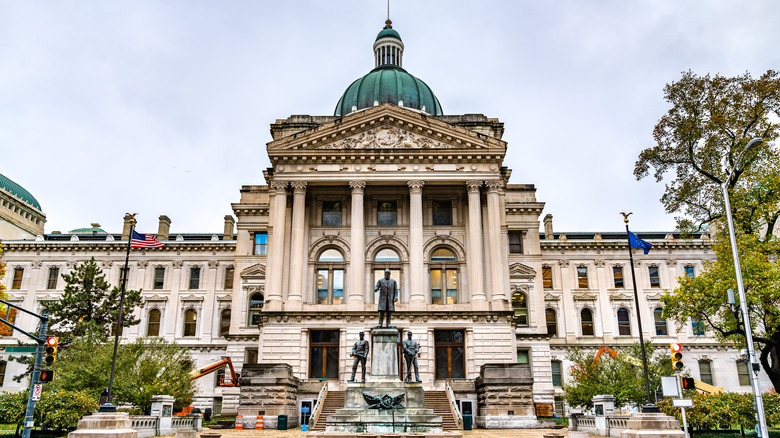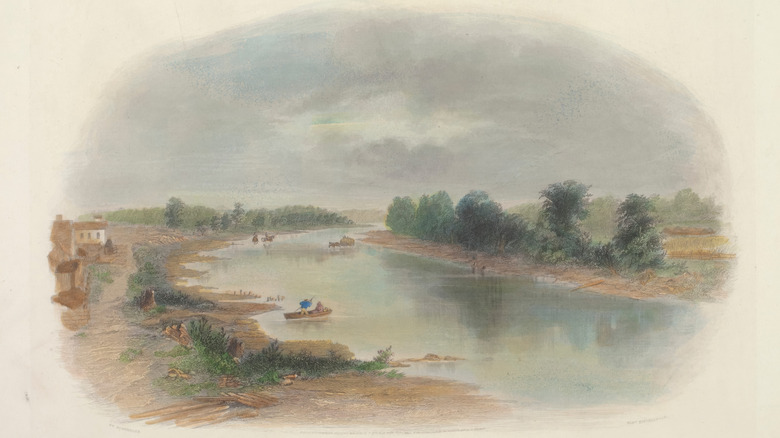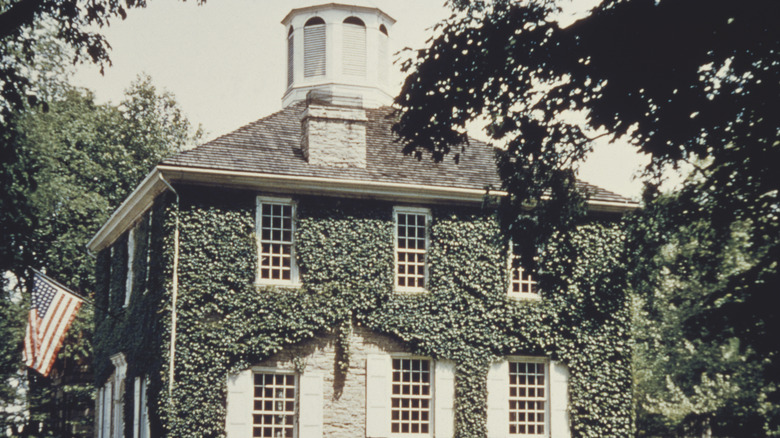Indiana's Original Capital Actually Wasn't Indianapolis
The imposing Indiana statehouse with its grand Renaissance Revival style edifice and domed rotunda makes it appear as if it's always been the seat of power for the state of Indiana. But once upon a time, before the building of the capitol in 1888 or the construction of other awe-inspiring sites in the city, like Monument Square, it was just a backwoods settlement and before that, it was a Lenape Native American village.
Yes, long before legislators in Indianapolis were coming up with such weird laws as banning homeowners from building fences with the intent of annoying their neighbors, the small town of Corydon in Southern Indiana laid claim to being the state capital from 1813 to 1825. Before that, when Indiana was a territory, it was Vincennes that held that distinction for most of the era, beginning in 1800. The capital kept moving for various reasons, including the changing borders of the territory and population shifts, as white settlers moved farther north, pushing Native Americans out, making centrally located Indianapolis the third and final capital.
Vincennes was Indiana's first capital
In 1800, Congress carved off Indiana Territory, which included most of present-day Indiana, and parts of Wisconsin, Illinois, Michigan, and Minnesota, from the Northwest Territory. President John Adams made William Henry Harrison the territorial governor and Vincennes became the capital. At the time, the population of white settlers in the huge territory was less than 6,000, not including the 12,000 Native Americans who didn't have a voice in the government.
Vincennes' population was around 1,500. The town was the oldest settlement in the territory and began as a French fort in the 1730s. Harrison arrived there in January 1801 and held the first legislative session at a private residence. In its 13 years as the capital, the legislature met in various locations, including a tavern, before the territorial assembly decided to pull up stakes and move 120 miles east to Corydon. After Congress chipped away at the Indiana Territory to create what would become Michigan and Illinois, Vincennes was no longer centrally located.
Corydon fought to stay the capital of Indiana
Corydon was only about 5 years old when it became the second territorial capital. Harvey Heth founded the town in 1808 after purchasing the land from William Henry Harrison, who later, in 1841, became the ninth U.S. president and the first to die in the White House a little more than a month after taking office. By the time Corydon became Indiana's seat of power, Harrison had already resigned. When the legislators arrived in 1813, they were forced to share space with county officials in a cramped and unfinished log building.
By 1816, the territory's population had just passed the 60,000 threshold of residents required for statehood, and that April President James Madison, who just two years earlier in 1814 had been forced to flee Washington during the War of 1812, signed the act allowing Indiana to become a state. In June 1816, the constitutional delegates met in Corydon to draft the state constitution.
The first statehouse, which still stands, was also completed that year, but by 1821, the state government once again decided to move. The General Assembly chose the tiny village of what would become Indianapolis but didn't actually move there until four years later. Corydon and the rest of Southern Indiana didn't want to give up its power and legislators weren't that keen on the long journey to a settlement with no conveniences. But eventually, the state government arrived there and never left.


